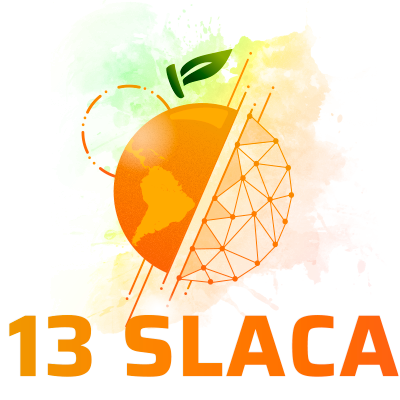Anais do Simpósio Latino Americano de Ciências de Alimentos
Anais do 13º Simpósio Latino Americano de Ciência de Alimentos
SALMONELLA ENTERICA IN INFANT FORMULA TREATED BY OHMIC HEATING: MICROBIAN INACTIVATION, SCANNING ELECTRON MICROSCOPY AND FLOW CYTOMETRY
Como citar esse trabalho?
Para citar este trabalho use um dos padrões abaixo:
Como citar esse trabalho?
Infant formulas are important nutritional substitutes for children who don’t have access to breast milk, which it can be submitted to microbial contamination along their handling. This study aimed to evaluate the different inactivation of Salmonella sp. in infant formula (initial count 8 log CFU mL-1) submitted to ohmic heating (OH; 50, 55 and 60 ºC; 45, 24 and 4 min; 3 V cm-1) and conventional heating, following the same time-temperature profile. Predictive model, flow cytometry and scanning electron microscopy (SEM) were performed. OH presented increased partial reductions of Salmonella counts when compared to conventional heating (3.04, 4.69 and 5.97 log CFU mL-1, 50, 55, 60 ºC against 0.91, 3.00 and 5.21 log CFU mL-1, p >0.05), demonstrating the predominance of thermal effect in relation to electrical one, being the data adequately adjusted to the Weibull model (0,969 < R2 < 0,996; 0,2082 < RMSE < 0,3307) in which presented decreased t5d and TR values in relation to conventional heating (2.91-66.58 and 0.78-36.16 min against 9.41-89.60 and 0.59-66.59 min, respectively p <0.05). In addition, flow cytometry showed that OH resulted in higher lived cells values and higher membrane depolarization values compared to conventional heating (53.29-2.68 % and 10.17-17.73 % against 37.98-0.60 % and 12.77-8.20 %, respectively, p˂0.05). Finally, SEM photographs suggested a direct proportional relation between the deformation of cell membrane with the temperatures processing, especially for ohmic heating. Our findings suggest OH can be an effective alternative during the infant formula processing, contributing for its microbiological safety.
- 1 Instituto Federal de Educação, Ciência e Tecnologia do Rio de Janeiro
- 2 Universidade Federal Fluminense
- 3 Universidade Federal do Estado do Rio de Janeiro
- 4 Instituto Nacional de Metrologia, Qualidade e Tecnologia
- 5 Universidade Federal do Rio de Janeiro
- 4. Alimentação e saúde (AS)
Discussões Científicas de Qualidade
Com ~200 mil publicações revisadas por pesquisadores do mundo todo, o Galoá impulsiona cientistas na descoberta de pesquisas de ponta por meio de nossa plataforma indexada.
Confira nossos produtos e como podemos ajudá-lo a dar mais alcance para sua pesquisa:
Como citar esse proceedings?
Esse proceedings é identificado por um DOI , para usar em citações ou referências bibliográficas. Atenção: este não é um DOI para o jornal e, como tal, não pode ser usado em Lattes para identificar um trabalho específico.
Verifique o link "Como citar" na página do trabalho, para ver como citar corretamente o artigo

